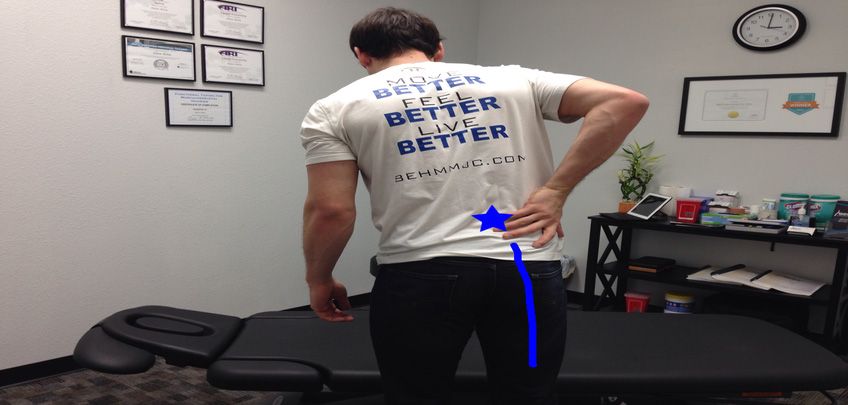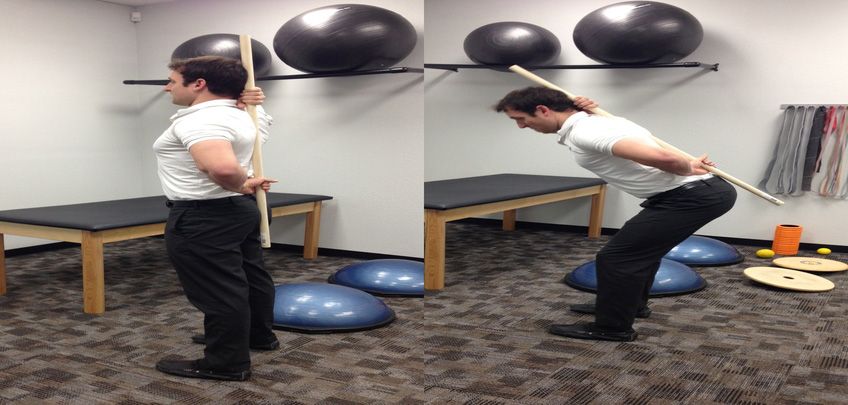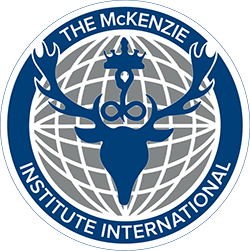Herniated Disc – Back Pain Chiropractor in Bellevue, NE

What is a Herniated Disc, Slipped Disc, Pinched Nerve, Bulging Disc?
Although these terms are used interchangeably in the healthcare industry, they typically pertain to a pathology of the inter-vertebral discs and the symptoms which may or may not be associated with them. It is important to realize that a herniated disc is a common musculoskeletal condition.
Two Causes of Pain: Pinched Nerve Vs. Disc Pain
In identifying the cause of the patient’s pain, there are two general types of spinal disc pain:
Pinched Nerve
When a patient has a symptomatic herniated disc, the disc itself is not painful, but rather the material that is leaking out of the inside of the disc is pinching or irritating a nearby nerve. This type of pathology produces pain called radicular pain (e.g., nerve root pain) leading to pain that may radiate to other parts of the body, such as from the low back down the leg.
Disc Pain
When a patient has a symptomatic degenerated disc (one that causes low back pain and/or leg pain), it is the disc space itself that is painful and the source of pain.
Diagnosing a Disc Herniation
Physical examination – Depending on the patient’s symptoms, a physical exam may include one or more of the following tests:
-
Nerve function in certain parts of the leg or arm.
-
Muscle strength.
-
Pain with palpation or motion.
-
Imaging. Occasionally if pain is not responding to conservative treatment the use of an imaging (CT, MRI) may be used. This is typically uncommon.
Treatment Options for Herniated Disc, Bulging Disc, Pinched Nerve
In general, patients usually are advised to start with a course of conservative care prior to considering spine surgery for a herniated disc. Conservative treatments are very successful in helping to reduce pain and discomfort associated with a disc injury. In addition to helping with recovery, rehabilitation is often used to educate patients on good body mechanics (such as proper lifting technique) which helps to prevent excessive wear and tear on the discs, and prevent future occurrences.
Lifestyle Factors Predisposing to Low Back Pain and Disc Herniation
According to the McKenzie Institute the two lifestyle factors are:
- Bad Sitting Posture
- Slouched sitting places the spine in flexion.
- In a sitting position the more the lumbar spine (low back) is flexed the higher the intradiscal pressure
- Frequency of flexion (rounding your low back)
Importance of Proper Hip Hinge and Rehabilitation

At Behm Muscle & Joint Clinic our initial focus when a patient enters the office with a herniated disc is to get them out of acute pain as quickly and efficiently as possible. This may take several visits however, once the acute pain has been diminished, we address proper movement patterns and stabilization. Without looking at how the patient moves though their hips and correcting their faulty movement patterns, patients are more prone to re-injuring their low back and herniated disc. We do this mainly by implementing proper hip hinge mechanics.
You may know someone that has hurt their low back and have been instructed by their doctor to do lower back exercises for strengthening their back and abdominal muscles. This is definitely beneficial, but it is only half of the solution. In addition to doing lower back strengthening exercises & stretches, you will benefit by learning how to hinge at the hips and move your body better to decrease the chances of re-injuring your low back.
It may seem that the simple task of bending over to touch the ground would we relatively safe. We have patients who come into the clinic and say they were “just bending over tying my shoe and threw out my back.” When you are not properly hip hinging, you place your lumbar spine in loaded flexion, which increases the pressure on the disc and increases your susceptibility to disc injuries and a herniated disc. A proper hip hinge not only lowers your chances of re-injuring your low back but has endless practical uses. Anything from opening the refrigerator and reaching for the bottom drawer, or reaching for a pot in the bottom cupboard, or when you want to pick your child up to carry them, all involves proper hip hinging.
The Behm Muscle & Joint Clinic Approach
At Behm Muscle & Joint Clinic we offer a triad of care in treating your herniated disc. We provide Chiropractic, Soft Tissue Therapy and Rehabilitation protocols to not only get you out of acute pain, but to prevent future occurrences by properly addressing your movement. In your initial visit a series of orthopedic, neurological, muscle strength tests and movement based tests will be conducted to determine the source of your low back pain. When a herniated disc is suspected our doctor utilizes the McKenzie Institute for diagnosis and treatment. The McKenzie Method® of Mechanical Diagnosis and Therapy® (MDT) is an internationally acclaimed method of assessment and treatment for spinal and extremity pain developed by New Zealand Physiotherapist Robin McKenzie. It has been widely used all over the world for more than 30 years. It involves a series of loaded and unloaded movements to determine the relieving or centralizing movement of your pain. The McKenzie Method® promotes the body’s potential to heal itself without medication, surgery or other passive modalities such as heat, ice or ultrasound therapy.
Once your acute pain has been reduced, we are able to work in a more rehabilitative effort and work on proper movement mechanics, core stabilization/bracing, glute strengthening exercises to lessen the chances that you re-injure your low back and promote a more functional lifestyle.
New Patients are Always Welcome
Behm Muscle & Joint Clinic is here to help lessen and relieve your lower back pain. Do not hesitate, contact us today at 402-292-1450 or schedule a consultation online for leading evidence-based assessments and treatments for your musculoskeletal pain and dysfunction. Dr. Behm is McKenzie Institute MDT Low back certified which is a mechanical diagnosis and treatment method used to correct derangement, dysfunction and postural syndromes causing low back and/or leg pain.
Content written by Dr. Adam Behm, DC, CCSP®

Schedule an appointment with our chiropractic team today!